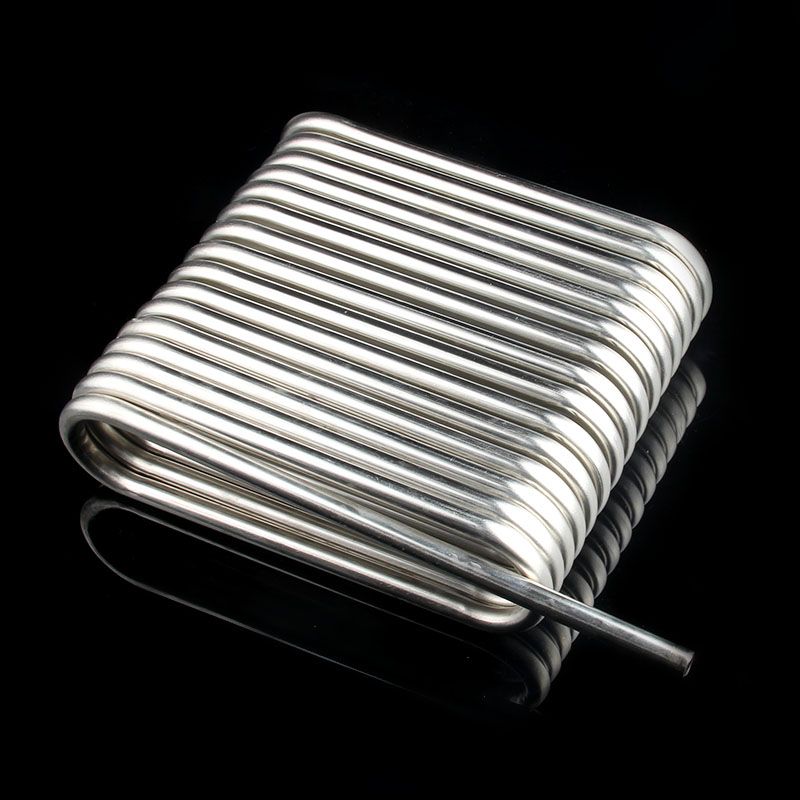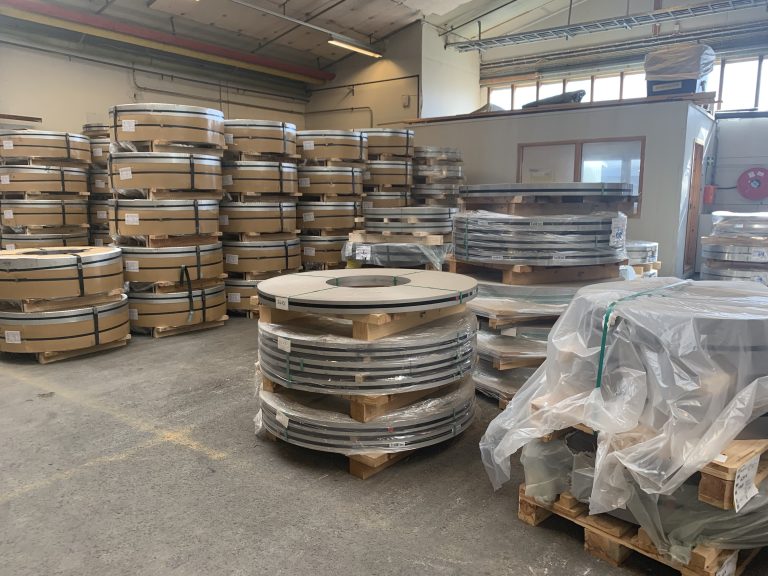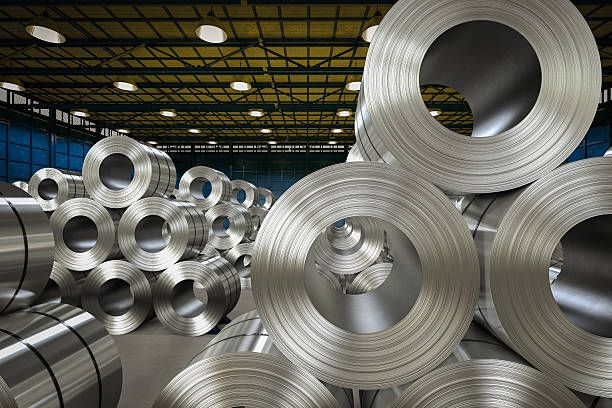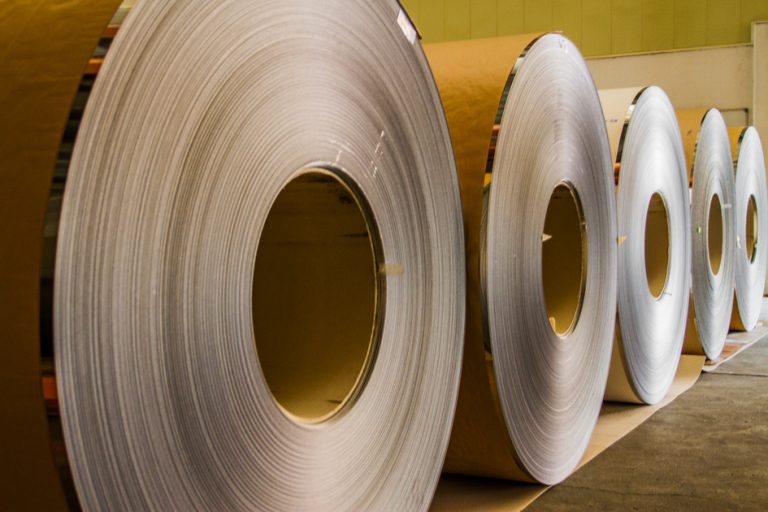Table of Contents
Stainless Steel Coil – Complete Guide to 304, 316L, and 430 Grades
Stainless steel coils are the foundation of modern manufacturing, playing a vital role in industries such as architecture, food processing, chemical engineering, automotive, and home appliances.
At GennHann Stainless Steel, we specialize in cutting, slitting, and polishing high-quality stainless steel coils across the 200, 300, and 400 series, providing precision and consistency trusted worldwide.
With over 40 years of experience, advanced equipment, and ISO 9001 certification,
GennHann delivers stainless steel materials that meet the highest industrial standards — combining strength, durability, and excellent surface finish.
What is Stainless Steel Coil?
A stainless steel coil is a long, continuous strip of stainless steel rolled into coil form, manufactured through cold or hot rolling processes.
This format is ideal for large-scale production as it allows flexible cutting, slitting, and transport efficiency.
GennHann’s coils undergo rigorous inspection for thickness accuracy, surface consistency, and mechanical properties, ensuring superior quality in every batch.
Specifications and Finishing Options
Specification | Range / Options |
Thickness | 0.10 mm – 6.00 mm |
Width | 4mm – 1550 mm |
Inner Diameter | 508 mm / 600 mm |
Surface Finish | NO.1 / 2B / NO.3 / NO.4 / HL / SB / BA |
Protection | PVC / PE film, paper interleaved |
Standards | ASTM A240, JIS 4305, EN 10088-2 |
Each stainless steel coil from GennHann is processed with precision to ensure flatness, consistent texture, and excellent corrosion resistance suitable for both decorative and structural use.
Common Stainless Steel Coil Grades and Applications
304 Stainless Steel Coil – The Versatile Standard
Composition: 18% Chromium, 8% Nickel
Key Features:
- Excellent corrosion resistance and strength
- Easy to form, weld, and polish
- Suitable for general-purpose and food-grade use
Applications: Kitchen equipment, architectural panels, decorative trim, food processing machines, and household appliances.
316L Stainless Steel Coil – Marine and Chemical Grade
Composition: 16% Chromium, 10% Nickel, 2% Molybdenum
Key Features:
- Superior resistance to acids, alkalis, and chloride corrosion
- Ideal for harsh and marine environments
- Low-carbon (L) version minimizes welding corrosion
Applications: Chemical tanks, pharmaceutical machinery, marine components, food-grade pipelines, and beverage systems.
430 Stainless Steel Coil – Cost-Effective and Magnetic
Composition: 16% Chromium, no Nickel
Key Features:
- Ferritic, magnetic, and economical
- Good thermal conductivity
- Excellent polishability for decorative use
Applications: Automotive trim, interior panels, appliance back covers, and kitchenware.
Processing Capabilities at GennHann Stainless Steel
Precision Slitting
- Thickness: 0.10 mm – 6.00 mm
- Width: 4 mm – 1550 mm
- Servo motor-driven for precise width tolerance
- Dual-side protective film available
Sheet Cutting
- Length: 100 mm – 6000 mm (±0.3 mm tolerance)
- Flatness control via tension-leveling systems
- Consistent edge quality for high-precision applications
Surface Finishing
- Available finishes: No.3, No.4, HL, SB, mirror polish
- Imported IMEAS (Italy) machines for uniform texture
- Optional protective film for transport and handling
Each process is monitored by ERP systems to maintain zero-error quality control and fast delivery.
STAINLESS STEEL PROCESS MACHINE – SLITTING / CUTTING / POLISHING
Industries We Serve
GennHann Stainless Steel coils are widely used across multiple sectors:
- Construction & Architecture: Elevator panels, exterior cladding, curtain walls
- Food & Beverage: Kitchen equipment, mixers, conveyors, storage tanks
- Automotive: Exhaust systems, interior trims, functional brackets
- Chemical & Energy: Reactors, heat exchangers, process piping
- Home Appliances: Refrigerator doors, washing machine panels, ovens
- General Manufacturing: Rollers, machinery parts, washers
Our stainless steel coils are exported to Asia, Europe, the Americas, and the Middle East, with long-term partnerships built on reliability and performance.
Why Choose GennHann Stainless Steel?
Founded in 1980, GennHann has grown from a domestic processor into an international stainless steel manufacturer.
Our core values – Integrity, Innovation, and Quality – guide every aspect of our operations.
Our Competitive Advantages:
- Over 40 Years of Industry Experience
Deep expertise in stainless steel slitting, cutting, and polishing. - Comprehensive Product Range
Full line of 200 / 300 / 400 series stainless steels. - Fast & Flexible Production
Advanced ERP-controlled workflow for on-time delivery. - Certified Quality Assurance
ISO 9001 certification and Toyota factory approval. - Expert Material Consultation
Custom recommendations to optimize your production efficiency. - Sustainable Manufacturing
Commitment to energy-saving, low-emission, eco-friendly operations.
“From precision craftsmanship to global supply — GennHann Stainless Steel delivers quality you can trust.”
Choosing the Right Stainless Steel Coil
Selecting the proper stainless steel coil depends on usage environment and performance needs.
Here’s a quick guide to help you decide:
Application Type | Recommended Grade |
Indoor, general purpose | 304 |
Chemical, marine, or high-humidity environment | 316L |
Cost-sensitive applications with minimal exposure | 430 |
Food contact or sanitary equipment | 316L |
Decorative use with BRIGHT finish | 304 / 430 |
FAQ
Q1: What’s the difference between cold-rolled and hot-rolled stainless steel coils?
A1: Cold-rolled coils have smoother surfaces and tighter tolerance — perfect for precision parts.
Hot-rolled coils are thicker and ideal for structural or heavy-duty uses.
Q2: Why is 316L more expensive than 304?
A2: 316L contains molybdenum, providing greater resistance to acid, alkali, and salt corrosion — essential for marine and chemical applications.
Q3: Can GennHann produce customized coil sizes?
A3: Yes, we provide custom slitting down to 4 mm width and cutting up to 6000 mm length with high precision.
Q4: What certifications does GennHann hold?
A4: We are ISO 9001 certified and have passed the TOYOTA factory quality verification, ensuring global standards compliance.
Q5: Which finish is suitable for decorative use?
A5: Hairline (HL), No.4 brushed, or mirror finish coils are ideal for architectural and design applications.
Conclusion
GennHann Stainless Steel Co., Ltd. is a leading manufacturer and supplier of premium stainless steel coils in Taiwan, offering top-quality 304, 316L, and 430 grades to global markets.
With decades of expertise, advanced processing technology, and a dedication to precision,
we provide materials that not only meet — but exceed — your expectations.
Whether you need stainless steel for industrial use, architectural design, or food-grade applications,
GennHann delivers performance, reliability, and value you can depend on. Contact us today for a quotation or consultation.
Recommended Internal Links
304 vs 316 stainless steel – What is the Difference



